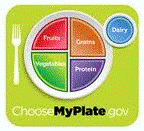Nutrition and Health Sciences, Department of

Department of Nutrition and Health Sciences: Dissertations, Theses, and Student Research
First Advisor
Karsten Koehler
Date of this Version
4-2018
Document Type
Thesis
Abstract
Physical activity (PA) and exercise aid in prevention and treatment of obesity and its comorbidities. Previous research has demonstrated a J-shaped curve between activity level and food intake, but minimal research examines whether PA and exercise affect food choices. As such, the aim of this study was to determine the relationship between habitual PA and exercise with food choices. 174 participants completed an electronic survey involving a series of binary choices among food options (aided by visual food cues) with varying reward values and time points. Participants also completed monetary binary choice questions and an exercise and activity questionnaire, with anthropometric data collected upon completion of the surveys. Participants were classified retrospectively based on habitual PA and exercise levels.
Participants with very high PA levels had a greater preference for delayed consumption of high fat (p=0.040) and non-sweet foods (p=0.049) as well as for the immediate consumption of sweet foods (p=0.020). High PA participants were more likely to choose larger portions for delayed consumption over smaller portions for immediate consumption for high fat (p=0.008), non-sweet (p=0.006), and sweet (p=0.04) foods. Participants with high (p=0.004) or very high (p=0.036) exercise volumes had a greater preference for low fat foods for both immediate (p
The results of this study suggest that although moderately correlated, PA and exercise exert differential effects on food choices. Participants with higher PA levels were more likely to choose sweet foods for immediate and delayed consumption, while participants with higher exercise volumes had a greater liking and preference for low fat foods. The results also suggest that food choices are more sensitive to differences in physical activity and exercise levels when compared to choices about money.
Advisor: Karsten Koehler


Comments
A thesis Presented to the Faculty of The Graduate College at the University of Nebraska In Partial Fulfillment of Requirements For the Degree of Master of Science, Major: Nutrition and Health Sciences, Under the Supervision of Professor Karsten Koehler. Lincoln, Nebraska: April, 2018.
Copyright (c) 2018 Safiya E. Beckford